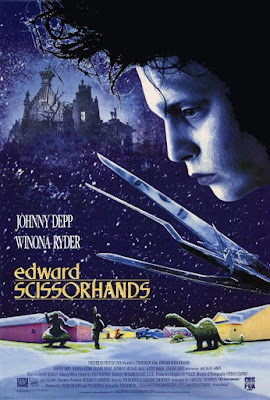One of the many great things about the films from Pixar Animation Studios is that from the beginning they have tailored their stories for kids and adults. When they say their stories are family films, they mean just that. Families as a whole can enjoy them; adults will never be bored and kids can learn lessons such as friendship (TOY STORY), family (THE INCREDIBLES), and their own emotions (INSIDE OUT). Their newest offering, SOUL, with director Pete Docter, takes the lessons of the afterlife explored in COCO (2017), and takes them a step further.
Joe (Jamie Foxx), is a talented music teacher with life-long aspirations to become a full-time jazz pianist. On the day he gets an offer to play with a band, he has an accident which sends him to the afterlife. There, he encounters a pre-existing soul named 22 (Tina Fey), and concocts a scheme to get himself back to Earth in time for his gig.
Poor Joe has a complicated path to get back to his body, lying in a hospital, in time for his opportunity of a lifetime. After avoiding going into the light of the afterlife (a stunning scene), he winds up in the Great Before, where little baby souls undergo training before they’re sent to Earth to inhabit newborn human babies. He is assigned as a mentor to 22, and plans on using her “Earth Pass”, earned when she finds her spark (the thing that makes her feel alive), to escape back to life on Earth.
Joe and 22 go through a series of adventures and mis-adventures, which includes landing on Earth in bodies that neither one of them want (one of which is a cat). While the story is workable and the characters easy to feel emotion for, SOUL spends most of its time working on theories about life before and after death. The Great Before is packed with complicated rules that seem to clash; the coveted spark for young souls (pre-Earth), is at first understood by Joe to be a person’s true passion. Later we’re sort-of told that it’s really one’s enjoyment of life (or something like that). There’s a difference between your spark and your passion, and that is just as confusing for Joe as it is the audience…and most of the film revolves around that theme.
Directed by Pixar veteran Pete Docter (MONSTERS INC., UP, INSIDE OUT), there is still a lot to enjoy in SOUL if it’s possible to cut through all the themes of reincarnation, existential philosophy, and the true meaning of life. Joe is a fully realized character; one who has been pursuing his dream with all of his (ahem) soul, despite the warnings of his mother (wonderfully voiced by Phylicia Rashad), who wants him to settle for a steady teaching career. Joe’s adventures hark back to classic storytelling, and his contrast with 22 keeps things moving. The animation is spectacular; the afterlife world done in eye-popping abstract art, and NYC brought to life in stunning detail. The score by Trent Reznor and Atticus Ross is outstanding. Docter gets great performances out of the cast. Jamie Foxx is excellent, as is Tina Fey. Angela Bassett comes in as a famous jazz musician and towers over most of the cast.
SOUL has a good story to tell and the presentation is some of the best that Pixar has ever done; the animation, characters, and concept are stimulating and beautiful. The concept is actually too good, as the conclusion of the film doesn’t quite match it. Joe finishes the film eager to live life to its fullest, which isn’t too far away from what he was trying to do in the first place. That, coupled with the unknown fate of 22, and a few unanswered questions (the soul of the cat is a tad fuzzy), makes SOUL a little frustrating. Its heavy themes will go right over kids’ heads, and adults may be challenged to explain it. There is a lot going on here, and all the themes feel like they’re competing for dominance. Just like our own souls, this one is beautiful, yet flawed.
BOTTOM LINE: Rent it























